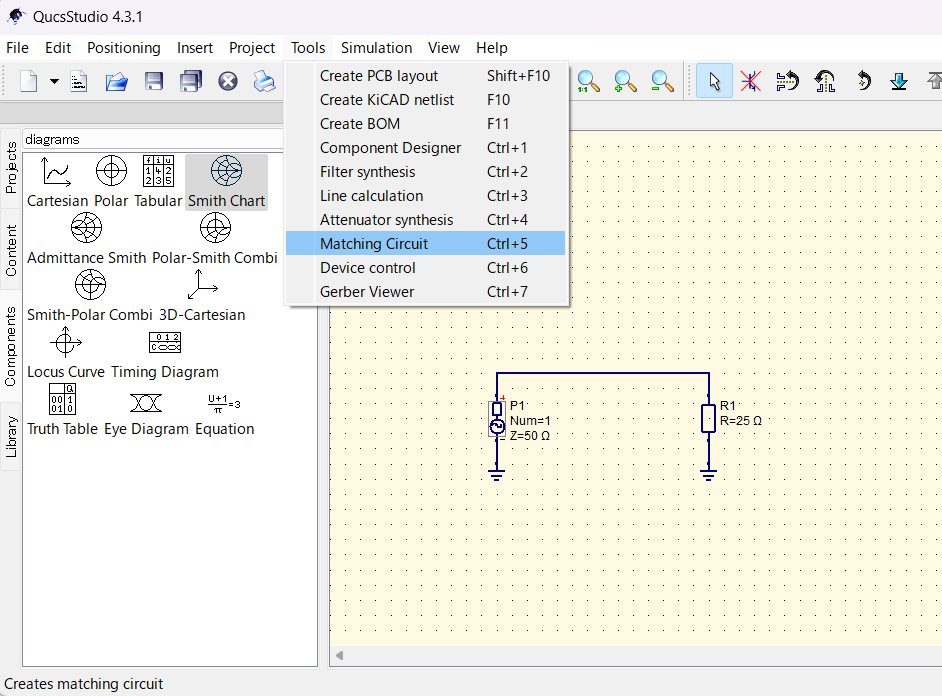How to Create a Matching Circuit in Qucs Studio: A Detailed Explanation for Port 1
1. Creating the Circuit Diagram
- Preparation: Launch Qucs Studio and place a resistor in the circuit diagram editor from ‘Components’ → ‘Lumped Components’.
- Setting the Resistor: Change the resistor value from 50Ω to 25Ω.
- Other Components: Place a signal source from ‘Sources’ → ‘Power Source’, connect GND to each component, and connect the components with wires.
This completes the circuit with an output impedance of 50Ω and a load impedance of 25Ω.

2. Designing the Matching Circuit
Let’s match this mismatched circuit.
- Adding a Matching Circuit: Open the ‘Create Matching Circuit’ window from the Qucs Studio menu by selecting ‘Tools’ → ‘Matching Circuit’.

- Settings: Since the load resistance is 25Ω, change Impedance 2 from 50Ω to 25Ω, set the target frequency to 1GHz, and click ‘Create’.

- Placing the Circuit: Connect the automatically calculated circuit to the earlier created circuit with a 25Ω load.

3. Checking the Circuit
- Circuit Contents: A coil of about 40nH is connected in series to the load, and a capacitor of about 32pF is connected in the previous stage.
4. Running the Simulation
- Setting Up the Simulation: Place a simulation from ‘Simulations’ → ‘S-parameter Simulation’, change the frequency range to ’50MHz-150MHz’, and adjust to 1MHz steps.

Then run the simulation.

5. Setting Markers
- Using Graphs: After running the simulation, graphs of S parameters and Smith charts are displayed.
- Setting Markers: Select ‘Set Marker on Graph’, click on the data on the graph to display S11 at a specific frequency, and move the marker to 100MHz.
6. Parameter Tuning
- Adjusting Parameters: Select ‘Tune’ and click on the coil and capacitor. This opens the ‘Parameter Tuning’ window, set the coil to ‘1nH-100nH’ and the capacitor to ‘1pF-100pF’.
- Executing Tuning: Adjust the component constants by moving the slider up and down, and observe the movement on the chart. Eventually, the coil matches approximately 40nH and the capacitor 32pF, matching the earlier constants.




コメント